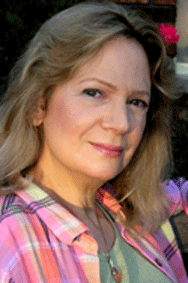Seems like mystery novels have been around forever but in the history of literature this genre is a relative newcomer. Before the mid-1800s, books were read primarily by the upper classes for education rather than entertainment. In the mid-1800s, rising literacy rates, technological advances in publishing that made books more accessible, and more leisure time contributed greatly to the popularity of novels in general and mysteries in particular.
Edgar Allen Poe, who died at the age of 40 on October 7, 1849, is considered the father of mysteries as we know them today. Poe created mystery’s first fictional detective, C. Auguste Dupin in The Murders in the Rue Morgue (1841). Dupin proved so popular, that his exploits continued in subsequent Poe mysteries. Poe refocused mysteries from merely situational to the study of the criminal’s mind.
Mystery novels weren’t solely the domain of male authors. In 1878, Anna Katherine Greene’s The Leavenworth Case made her the first woman to write a detective novel. Elements of detection introduced in this novel influenced writers of the “English country house murder” school in the 1920s.
You can’t think “detective” without conjuring up Sir Arthur Conan Doyle’s Sherlock Holmes, who was introduced to readers in A Study in Scarlet (1887) and became the iconic fictional detective of intelligence and scientific knowledge through a series of books.
With increasing prosperity in England and America, and the evolution to a popular format for mystery novels, the 1920s launched the “Gold Age” of mystery fiction. The queen of the genre was Agatha Christie whose 50-year career yielded more than 80 novels, translated into 103 languages. Making the detective’s character as important as the who-done-it, she created two of the most enduring sleuths in mystery fiction: the Belgiun detective Hercule Poirot and the mystery-solving spinster Jane Marple.
On the heels of the Golden Age featuring English authors, American authors with their sensibilities, characters and locales gained popularity. Mystery novels reached their zenith here in the 1930s and 40s. The most notable characters included Dashiell Hammett’s Sam Spade, Raymond Chandler’s Philip Marlowe, Earl Derr Bigger’s Charlie Chan and Erle Stanley Gardner’s Perry Mason. Then there is Ellery Queen, a pseudonym for the collaboration of American cousins Manfred B. Lee and Frederic Dannay whose detective also went by that name. In all, the two authors wrote 33 Ellery Queen novels spanning over 40 years.
Other types of mystery series that made their mark between the 20s and 40s included Ed McBain’s police procedurals and Mickey Spillane’s Mike Hammer (maligned by critics for its emphasis on sex and violence but popular with readers). Even young readers got hooked on mysteries, following their own sleuths in the popular Nancy Drew and Hardy Boys series.
Mystery series featuring sleuths are as popular as ever. Examples include Sue Grafton’s Kinsey Millhone, Robert B. Parker‘s Boston-based P.I. Spenser, and P.D. James‘British policeman Adam Dagliesh.
Guests at this month’s BOOKS ‘n’ BOTTLES™ will meet popular mystery authors and learn about the latest books in their series. Patricia Skalka, author of the hot-off-the-press Death in Cold Water (a Dave Cubiak mystery), and Larry D. Sweazy, author of the recently released See Also Deception (a Marjorie Trumaine mystery), will share in the conversation-friendly free wine tasting at TASTE Food & Wine in Chicago on Monday, October 24th from 6-8 p.m. Patricia will also hold court from 6-8 p.m. at the October 25th BOOKS ‘n’ BOTTLES™ at Sunset Foods in Northbrook, IL. Books and wines, along with Bonus Buy packages will be available for sale at both events.

